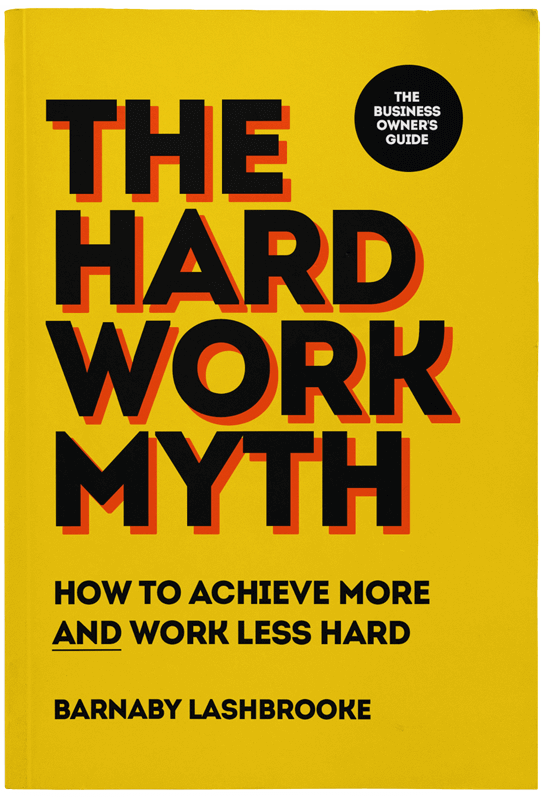Every company needs a website, even if most of your business comes through word of mouth referrals and you don’t transact through it. That’s because prospects almost always do their due diligence – checking your online presence, reading reviews and Google searching you – before they ever make contact with you.
A website doesn’t just signal that you’re a legitimate and operational business, it also tells a prospect what you’re all about (your values), and the benefits to engaging your services.
Also, it’s thought that a lead needs to have somewhere between 10 and 16 interactions with a company before they start to engage with it. Marketing folk call these ‘touch points’, and your website can host lots of these, such as blogs and e-books, reports and self service resources.
Yet most company websites could be refined or dramatically improved. And given that it’s unlikely your site will become a cultural touchstone like the untouched 1996 Space Jam website, there’s no time like the present. With that in mind, we’ve come up with seven tweaks that’ll improve your website for visitors and prospects and make it work harder for your growing business.
Remember: your website is so much more than just a basic repository of information about your company. It can be a truly critical part of your strategy for success in 2021.
1. A helpful homepage
|
2. No sloppy copy
|
3. Calls to action
|
4. Live chat
|
5. Human copy
|
6. Clear pricing
|
7. Solid SEO |
1. A helpful homepage
“Great web design without functionality is like a sports car with no engine.” – Paul Cookson
The internet is a pretty crowded place. In fact, since the first website was launched on August 6, 1991 by British computer scientist Tim Berners-Lee, more than 1.8 billion of them have been published, according to current estimates.
Yet despite all that time to learn about the internet, how many times have you landed on a website and were none the wiser about what the company actually does?
Beautiful-looking websites are all too often filled with vagaries like ‘delivering the optimal experience’, ‘unlocking potential’ or ‘customer-facing solutions’ yet omit key details about the service they offer.
A website is a little like a house: if you’re going to sell, you're going to need ‘curb appeal’. The first impression of your website is often your homepage and, more specifically, the top bit of your homepage that’s ‘above the fold’ i.e. before anyone starts scrolling down.
So that space has a very important role: to immediately explain what you do, with a focus on the benefits to your customers or potential customers. Often this will be the specific pain points or problems that you solve, only with a positive spin. For example, an accountant that helps you to ‘realise your wealth and stay compliant’ sounds less terrifying than an accountant that ‘helps you to avoid a fine from not paying your taxes’.
A common mistake is to try and rebrand what you do so you seem different to others in your sector. While there are lots of branding tactics and techniques you can use to stand out and be different from your competitors, making up a new name for what you do is not advised, because you’ll only confuse people.
Consider the K.I.S.S principle when you’re writing: ‘keep it simple stupid’ because you have the rest of the website to explain your service in more depth. Above the fold, and beneath the name of your company, you should be able to describe what you do in 10 words or less.
Also on the homepage should be social proof you’re great at what you do, so start collecting client or customer testimonials.
2. No sloppy copy
“If it sounds like writing, I rewrite it.” – Elmore Leonard
When writing website copy, a common mistake is to assume people care about your company and focus on what you offer. While that might be true of your friends and family, visitors to your website are generally selfish: they’ve landed on your website to figure out a solution to their particular problem.
What that means is the way you write about your company and your service can have a powerful effect on the conclusion those visitors come to.
On the average web page, users have time to read at most 28% of the words during an average visit (Source: ACM Transactions on the Web)
|
First, get the basics right. Make sure your copy is typo free, grammatically correct and that you avoid sector-specific buzzwords, jargon and technical terms that quickly lose people’s attention.
As we’ve already touched, words ‘above the fold’ should be kept to an absolute minimum. A little more detail can be unpacked the further down the page you scroll, but the most detailed sections will need their own pages.
For every page on your site, focus on benefits your service brings to your customers, and the problems you solve. Show that you have an understanding of their issues and pain points.
Which is more powerful? “We sell life insurance” or “We’ll help you safeguard your family’s future if the worst should happen”.
That’s why knowing your customers is the best place to start. You can make your copy work harder for them by asking the question “so what?” each time you write a statement. This will help you get to the heart of what you do, which has far more resonance. For example:
“We are mortgage brokers.”
So what?
“We have a view of every deal on the market, including those the public can’t access.”
So what?
“We help people access the best possible mortgage deals for their financial situation.”
So what?
“Our expertise can help families be financially better off over the course of their lives.”
3. Calls to action
“It’s important to remember your competitor is only one click away.” – Douglas Warner III
Calls-to-action, known as CTAs by marketing folk, are simple yet potentially powerful additions to your website. They encourage a visitor to your website to take action after reading, rather than clicking away and forgetting all about you.
A CTA is much like a command and can be something as simple as a button that reads ‘subscribe’, ‘learn more’, or ‘try for free’.
Because these are important tools for turning interested website visitors into leads, you need one on every page of your website.
There’s lots of psychology behind how to write CTAs, but the main rules are:
1. Be short, concise and clear
2. Don’t be vague: use commands over questions
3. Make sure you CTA button pops on the page (choose the colour and design carefully for maximum visibility) without being irritating
Different CTAs have different functions. You could use them to get your website visitors to subscribe to an email newsletter, or a piece of content you’ve created. You could offer them a free trial or demo of your service or software. Or you could send them to a different page on your website where they could learn more.
There are programs that can read the location, browser language and previous customer history of a user and create a call-to-action that is individualized to their current status. A bit spooky, but potentially very powerful.
Personalized CTAs perform 202% better than basic CTAs (Source: Hubspot)
|
When writing your CTA, think about what might make someone click. It needs to be believable, potentially exciting, and convey the benefits. So, rather than ‘speak to us now’ try ‘learn how to increase your sales’ which will pique curiosity.
And finally, remember to test your CTAs. If they’re not working, then change them, as many times as it takes to get them right.
4. Live chat
“Paperwork wouldn’t be so bad if it weren’t for all the paper. And the work.” – Darynda Jones
There is a strong argument for having a contact form somewhere on your homepage, so prospects can get in touch with you easily. If you think about it, form is another call to action, and you can encourage people to fill it in with the right command: ‘Drop us your email and let’s talk about how to become a more effective leader’.
This style of information gathering has been the standard for decades, but it has its flaws. There’s usually a considerable delay between the form being filled in and anyone speaking to the lead, by which time they can be in a completely different mindset.
So why not strike while the iron is hot and consider embedding a live chat function? Depending on the size of your business and the number of enquiries, this can be manned by you, via an app on your phone that allows you to reply immediately to any questions, or you can use bots.
55% of businesses using chatbots have generated a greater volume of high-quality leads (Source: Drift)
|
Used carefully, bots can be used to automate enquiries (to a point) and save people hours for more meaningful work. A person who gets in touch via live chat will be asked by the bot what they need help with. If that person wants to set up a demo or a meeting, the bot can offer them a booking form so the meeting syncs with your calendar. Bots can also answer simple questions, replacing the need for an FAQ (frequently asked questions) page. And they can help filter out some of the more speculative inquiries from the more concrete (as well as weed out the spam). Anything that cannot be answered by a bot is immediately escalated to a human to deal with.
These bots, when combined with a CTA like ‘talk to us now’, can serve as a great work-around from tedious auto-fill forms and a much speedier way to connect customers to someone who could take them to the next step.
5. Human copy
“Many companies have forgotten they sell to actual people. Humans care about the entire experience, not just the marketing or sales or service. To really win in the modern age, you must solve for humans.” – Dharmesh Shah
In news that will shock nobody, people want to work with and buy things from other people, not entities. That is why more and more websites have team pages, testimonials, case studies and all other things that make them more ‘human’.
Team pages indicate that a person who signs up to work with your company will be dealing with people, and they may also evoke your value as a decent, responsible employer. Remember your website isn’t only for prospects, but future employees too.
Team pages are where even the most ‘corporate’ companies get creative. As well as career highlights, there’s plenty of stunning photography, artwork and biogs to be found on websites of all sizes. Try asking your team to name their hidden talents, or to share their dream dinner party guests, or to be photographed with an object that best represents their personality.
You’ll also need to start collecting social proof that you’re great at what you do. Testimonials, reviews and case studies can be text based, or in video format, and add credibility to any website.
You can also be more human in your copy by avoiding jargon and overly technical language, and speaking to the person reading. Wherever possible use ‘you’ over ‘we’ - after all, your business solves their problems. Use tone to show empathy.
Talk normally, treat your visitors with respect and remember that people are not rational machines that buy things based on logic and reasoning (even financial products and software); they buy and sell from people mostly on how they feel about it.
6. Clear pricing
“You know you’re priced right when your customers complain—but buy anyway.” – John Harrison
Here lies perhaps the most delicate part of the whole operation: the pricing page. Not every business includes their prices on their website, and it very much depends on your business.
But if you get a lot of enquiries from people who can’t afford your services, it’s probably better to save both their time and yours by publishing your prices. Just make sure you’re very clear about what level of service and the benefits they can expect to receive for those prices and what the return on investment will be.
If your customers have got this far in the buyer journey that they’re comparing prices, they’re probably weighing up their shortlist and getting ready to make a decision meaning those visitors who look at this page are ripe for the picking. Make sure this page has a really strong call to action that gives them the option to speak to someone.
7. Solid SEO
“Google only loves you when everyone else loves you first.” – Wendy Piersall
You can’t avoid search engine optimization (SEO) when it comes to planning and designing your website. At its core, SEO is just improving your website so it is more likely to appear in search engine results.
While this has led to some interesting company names like ‘Hairdresser In My Area’ or ‘Takeaway Near Me’, SEO is a vital tool for growing your site and business and is not as complicated as it appears.
Over 52% of marketers are investing in technical SEO updates to their website (Source: Hubspot)
|
What you need to know are the keywords related to your business so you can deploy them in your blogs, website copy and other such places.
Most search engines will prioritize a site that is regularly updated, contains images and video content and contains all the right keywords in an organic way. It also proritizes sites that are linked to from other credible, legitimate websites in an organic way.
This is also where investing in some good PR can really help as getting your website linked on a couple of other authoritative sites can go a long way to ensuring you creep towards that first page of Google and stay there.
However, engines like Google and Bing will try to steer people away from sites that haven’t been updated in a while or take a long time to load. That is why you need to keep your site and user experience as smooth as possible and not packed with incredibly high-resolution images and flash players.







